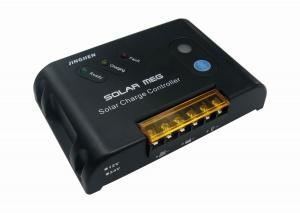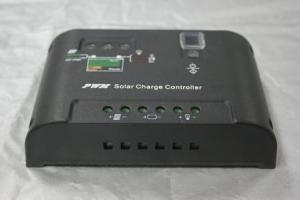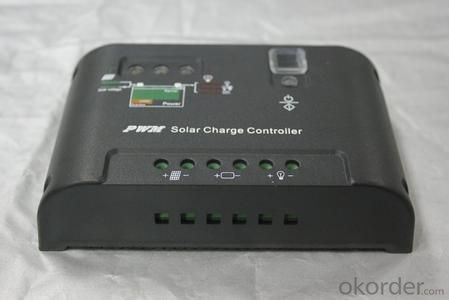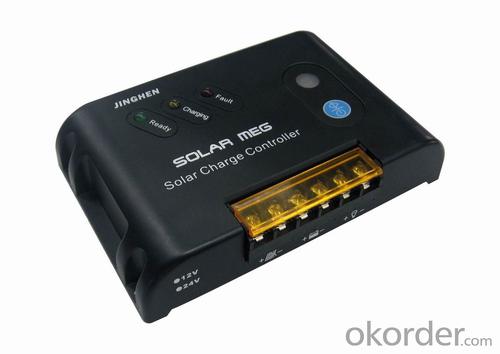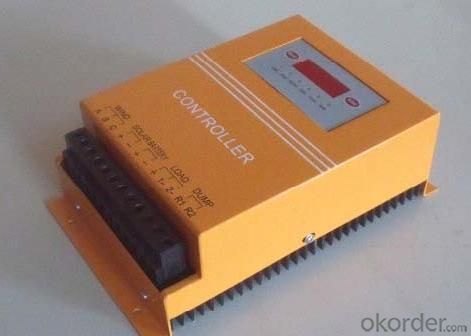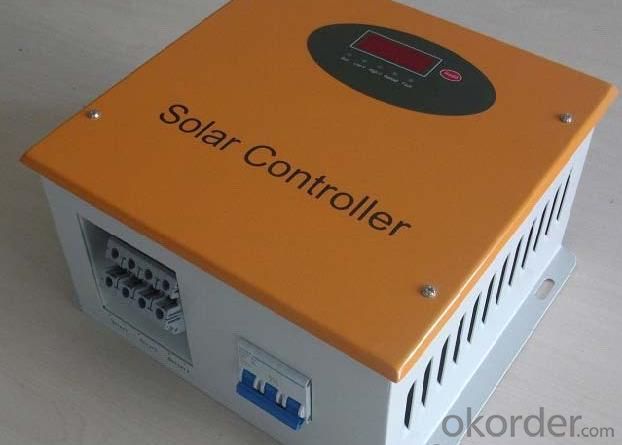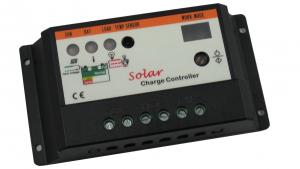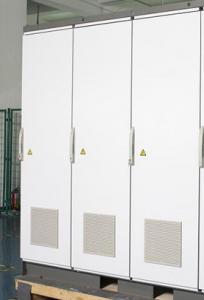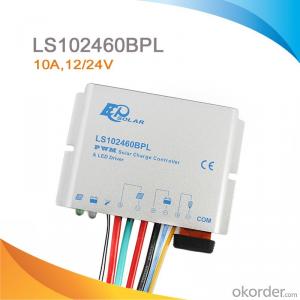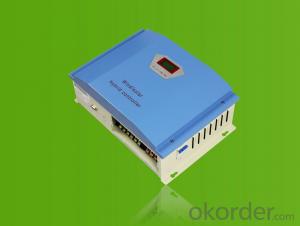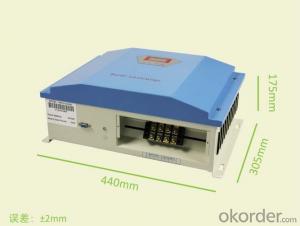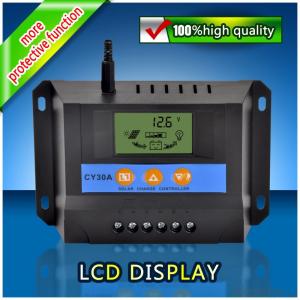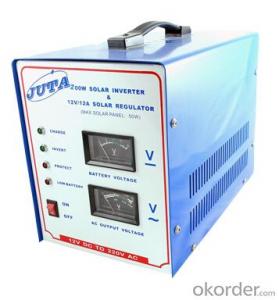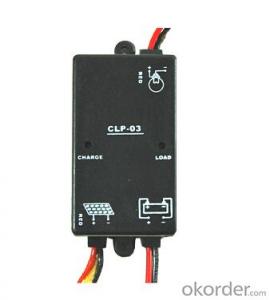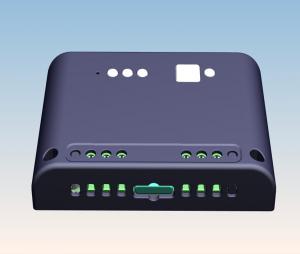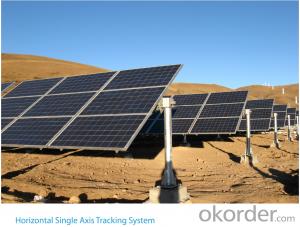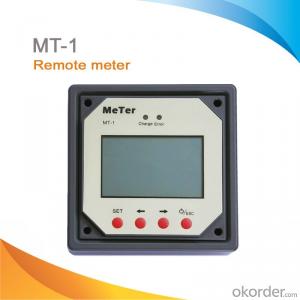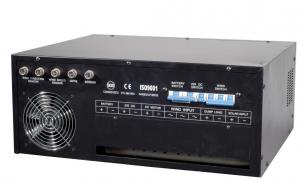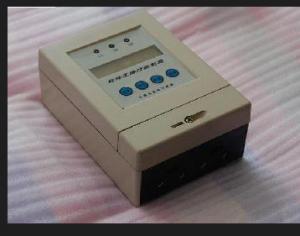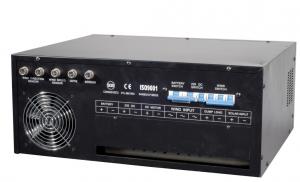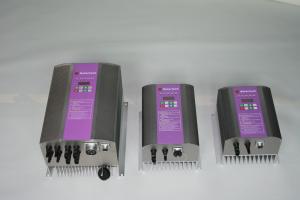L-Series P4Q Solar Tracking PV Controller
- Loading Port:
- Nanjing
- Payment Terms:
- TT/LC
- Min Order Qty:
- 50sets set
- Supply Capability:
- 1-3000sets/month set/month
OKorder Service Pledge
OKorder Financial Service
You Might Also Like
Specification of L-Series PV Controller
Professional MCU microprocessor control, the real charge and discharge of intelligent control;
Low-loss, long-life MOSFET switching devices as the main controller;
PV charging(PWM) technology, a higher charging efficiency;
Operating status, fault LED indicates the;
Control modes: light control switch control mode / off light control to open when the control mode / automatic light control mode when the control;
Absorb the output circuit with inductive load;
Memory function, the controller re-energized after power on, automatically de-energized mode before;
Perfect protection;
Against reverse battery;
Maintenance easy, fast;
Optional Configuration of L-Series PV Controller:
RS485/RS232 Remote monitoring;
Supporting electricity can be a complementary manner to ensure uninterrupted power supply load;
Technical Data of L-Series PV Controller:
Voltage | 12V | 24V | 36V | 48V | ||
Rated current range | 5A~30A | 5A~30A | 5A~20A | 5A~20A | ||
Battery input | ||||||
Rated input voltage (VDC) | 12 | 24 | 36 | 48 | ||
Under voltage protection (VDC) | ≤10.8 | ≤21.6 | ≤32.4 | ≤43.2 | ||
Recovery voltage (VDC) | ≥12.3 | ≥24.6 | ≥36.9 | ≥49.2 | ||
Overvoltageprotection (VDC) | ≥16.5 | ≥33.0 | ≥49.5 | ≥66.0 | ||
Overvoltage recovery (VDC) | ≤15.0 | ≤30.0 | ≤45.0 | ≤60.0 | ||
Solar energy input | ||||||
Max. open circuit voltage (VDC) | 25.0 | 50.0 | 75.0 | 100.0 | ||
Light control open, turn off the lights | Voltage light(VDC) | ≤3.5 | ≤7.0 | ≤10.5 | ≤14.0 | |
Voltage light (VDC) | ≥7.0 | ≥14.0 | ≤21.0 | ≤28.0 | ||
Float voltage (VDC) | 13.7 | 27.4 | 41.1 | 54.8 | ||
Overcharge protection voltage (VDC) | ≥14.4 | ≥28.8 | ≥43.2 | ≥57.6 | ||
Charge recovery voltage (VDC) | ≤13.2 | ≤26.4 | ≤39.6 | ≤52.8 | ||
DC output | ||||||
Number of outputs(N) | 2 | |||||
Rated output current | load1 (A) | 2.5~15 | 2.5~15 | 2.5~10 | 2.5~10 | |
load2 (A) | 2.5~15 | 2.5~15 | 2.5~10 | 2.5~10 | ||
Overvoltage capacity | 120% overload 60 seconds off the output / 150% overload for 10 seconds to close the output | |||||
Control mode | Light control mode / time control mode / automatic control mode | |||||
Serial communication | RS485(A、B) | |||||
Mechanical dimensions, the work environment | ||||||
Size ( D x W x H ) | 230 x 145 x 75 | |||||
Reference weight (Kg) | 6 | |||||
Protection level | IP41 | |||||
Max. working altitude (m) | ≤3000 | |||||
Temperature range (℃) | -20 ~ +65 | |||||
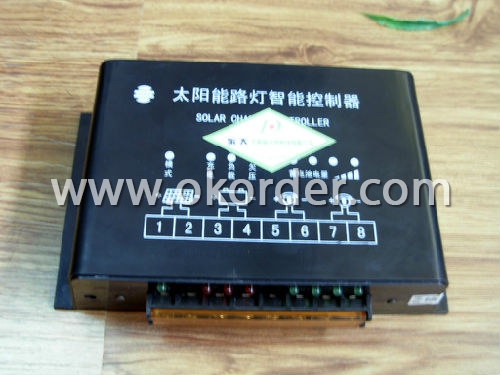
L-Series PV Controller
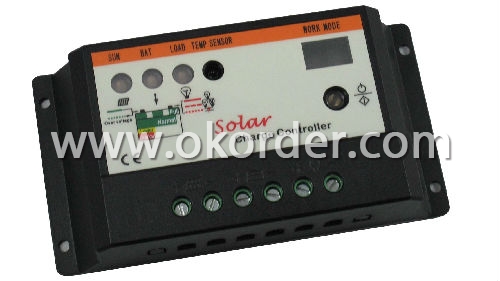
L-Series PV Controller
Packaging & Delivery of L-Series PV Controller
Packaging: Wooden box or Customized
Delivery: Depends on the quantity or Customized
- Q: What is a solar controller and what is its purpose?
- A solar controller, also known as a solar charge controller or PV controller, is an essential component in a solar power system that regulates the flow of electricity between the solar panels and the battery bank. Its primary purpose is to protect the batteries from overcharging and prevent any potential damage that could occur. Solar controllers monitor the voltage and current coming from the solar panels and ensure that it is adjusted to match the battery's requirements. They use a technique called pulse width modulation (PWM) or maximum power point tracking (MPPT) to optimize the charging process and maximize the energy harvested from the solar panels. By preventing overcharging, a solar controller helps extend the lifespan of the batteries and ensures their efficient performance. Overcharging can lead to electrolyte loss, excessive heat generation, and ultimately, reduced battery capacity and lifespan. Additionally, solar controllers protect the batteries from deep discharge, which can also damage them. Furthermore, solar controllers often come equipped with various safety features, such as short-circuit protection, reverse polarity protection, and over-temperature protection. These features guard against potential electrical faults and ensure the system operates safely and reliably. In summary, a solar controller acts as the intermediary between the solar panels and the battery bank, regulating the flow of electricity and protecting the batteries from overcharging and other potential damages. It plays a crucial role in optimizing the performance, efficiency, and longevity of a solar power system.
- Q: Can a solar controller be used with solar-powered indoor manufacturing systems?
- Solar-powered indoor manufacturing systems can utilize a solar controller, which functions as a vital component in regulating the electricity flow between the solar panels and batteries. It ensures efficient charging of the batteries while preventing overcharging or system damage. Even though the manufacturing processes are conducted indoors, the solar controller remains indispensable in managing energy flow from the solar panels to the batteries. By optimizing solar energy utilization, the solar controller guarantees smooth and efficient operation of the system, irrespective of the manufacturing facility's location.
- Q: A solar controller 12v20A battery 12v 20A Will the number of tile solar panels need to be able to properly charge
- As long as the voltage is 12V, with more power battery panels can be affected only the problem of charging speed.
- Q: Are there any safety precautions I should take when installing a solar controller?
- When installing a solar controller, it is important to take several safety precautions into consideration: 1. Prior to commencing the installation, it is crucial to deactivate all power sources connected to the solar controller and disconnect any batteries or power supplies. This step is essential in preventing electrical shocks or accidents during the installation process. 2. Wearing appropriate protective gear, such as safety glasses and gloves, is highly recommended during the installation of a solar controller. This precautionary measure will safeguard you from potential injuries or accidents that may occur. 3. It is imperative to carefully read and adhere to the manufacturer's instructions provided with the solar controller. This will ensure that you follow the recommended installation procedures and specific safety precautions for the particular model being installed. 4. Verifying proper grounding of the solar controller according to the manufacturer's instructions is essential. Adequate grounding helps protect against electrical faults and minimizes the risk of electrical shocks or fires. 5. It is essential to avoid installing the solar controller in areas where there is a chance of water or moisture exposure. Damp or wet locations can pose electrical hazards and damage the equipment. 6. Using the correct wiring and connectors specifically recommended by the manufacturer for the solar controller installation is crucial. This ensures proper electrical connections and reduces the risk of short circuits or other electrical accidents. 7. If you are uncertain about any aspect of the installation process or lack the necessary skills or knowledge, seeking professional assistance is highly recommended. This ensures that the solar controller is installed correctly and safely. By adhering to these safety precautions, you can minimize the risks associated with installing a solar controller and ensure a safe and successful installation process.
- Q: What is the role of a solar controller in preventing damage to the solar panels from electrical faults?
- The role of a solar controller in preventing damage to the solar panels from electrical faults is crucial. A solar controller, also known as a charge controller or regulator, is responsible for regulating and controlling the flow of electricity from the solar panels to the batteries or electrical loads. One of the main functions of a solar controller is to protect the solar panels from overcharging. When the batteries are fully charged, excess energy from the solar panels can cause overcharging, which can damage the batteries and reduce their lifespan. The solar controller monitors the battery voltage and prevents overcharging by diverting the excess energy away from the batteries. Additionally, a solar controller plays a vital role in preventing damage to the solar panels from electrical faults such as short circuits or reverse current. In the event of a short circuit or reverse current, the solar controller detects these faults and immediately interrupts the flow of electricity from the solar panels. By interrupting the electrical connection, the solar controller prevents further damage to the panels and ensures the safety of the entire solar power system. Furthermore, a solar controller also offers protection against over-discharging of batteries. Over-discharging can be harmful to the batteries and may lead to irreversible damage. The solar controller monitors the battery voltage and disconnects the loads when the battery voltage reaches a certain low level. This prevents over-discharging and extends the lifespan of the batteries. Overall, the role of a solar controller in preventing damage to the solar panels from electrical faults is to regulate and control the flow of electricity, protect against overcharging, detect and interrupt electrical faults, and prevent over-discharging of batteries. By performing these functions, the solar controller safeguards the solar panels, batteries, and the entire solar power system, ensuring its optimal performance and longevity.
- Q: Does a solar controller have surge protection?
- Yes, a solar controller typically includes surge protection. Surge protection is a crucial feature in solar controllers as it safeguards the solar panels and other components of the solar system from voltage spikes and power surges. These spikes can occur due to lightning strikes, grid fluctuations, or other electrical disturbances, and can potentially damage or destroy the solar controller and other connected devices. Surge protection in a solar controller helps to absorb and redirect these voltage spikes, ensuring the smooth and safe operation of the solar system.
- Q: Can a solar controller be used in a solar-powered refrigeration system?
- Yes, a solar controller can be used in a solar-powered refrigeration system. A solar controller is used to regulate the flow of electricity from the solar panels to the system's batteries, allowing for efficient charging and preventing overcharging. In a solar-powered refrigeration system, the solar controller helps to ensure that the system operates optimally by managing the power supply and maintaining the required temperature levels.
- Q: How does a solar controller handle variations in ambient light conditions?
- A solar controller is designed to efficiently regulate and optimize the charging process of a solar panel system based on ambient light conditions. It uses advanced technology and algorithms to handle variations in light intensity and adjust the charging parameters accordingly. One of the primary functions of a solar controller is to monitor the voltage and current generated by the solar panels. When there is sufficient sunlight, the controller detects a higher voltage and current, indicating optimal charging conditions. In response, it adjusts the charging parameters to allow maximum power transfer from the panels to the battery, ensuring efficient charging. However, as ambient light conditions change, the solar controller needs to adapt to ensure the system's optimal performance. During low light conditions, such as cloudy or overcast days, the controller detects a drop in voltage and current. In such cases, it reduces the charging parameters to prevent overcharging the battery, which could lead to damage or reduced lifespan. Conversely, during periods of high light intensity, such as sunny days, the controller detects an increase in voltage and current. To prevent overloading the battery, it adjusts the charging parameters to limit the amount of power transferred, ensuring the battery is charged safely and efficiently. Furthermore, a solar controller may also incorporate additional features like temperature compensation to handle variations in ambient temperature. As temperature affects the charging process, the controller adjusts the charging parameters accordingly to compensate for temperature fluctuations and maintain optimal charging conditions. In summary, a solar controller effectively handles variations in ambient light conditions by continuously monitoring and adjusting the charging parameters based on the voltage and current generated by the solar panels. This ensures that the solar panel system operates efficiently, maximizes power transfer, and protects the battery from overcharging or other potential issues.
- Q: Can a solar controller be used with solar panels of different technologies (monocrystalline, polycrystalline, thin-film)?
- Yes, a solar controller can be used with solar panels of different technologies, including monocrystalline, polycrystalline, and thin-film. The purpose of a solar controller is to regulate the charging process of the battery or the power output from the solar panels to ensure optimal performance and prevent overcharging. It does not depend on the type of technology used in the solar panels. However, it is important to ensure that the solar controller is compatible with the voltage and current ratings of the solar panels being used to ensure efficient and safe operation.
- Q: Solar controller red light flashing
- Solar controller is divided into a variety of types, the lights are also representative of the battery, battery components and load, you said the red light flash is the end of the indicator light. You can also look for the controller's instructions, the above will generally refer to the reasons for the light flash.
Send your message to us
L-Series P4Q Solar Tracking PV Controller
- Loading Port:
- Nanjing
- Payment Terms:
- TT/LC
- Min Order Qty:
- 50sets set
- Supply Capability:
- 1-3000sets/month set/month
OKorder Service Pledge
OKorder Financial Service
Similar products
Hot products
Hot Searches
Related keywords
